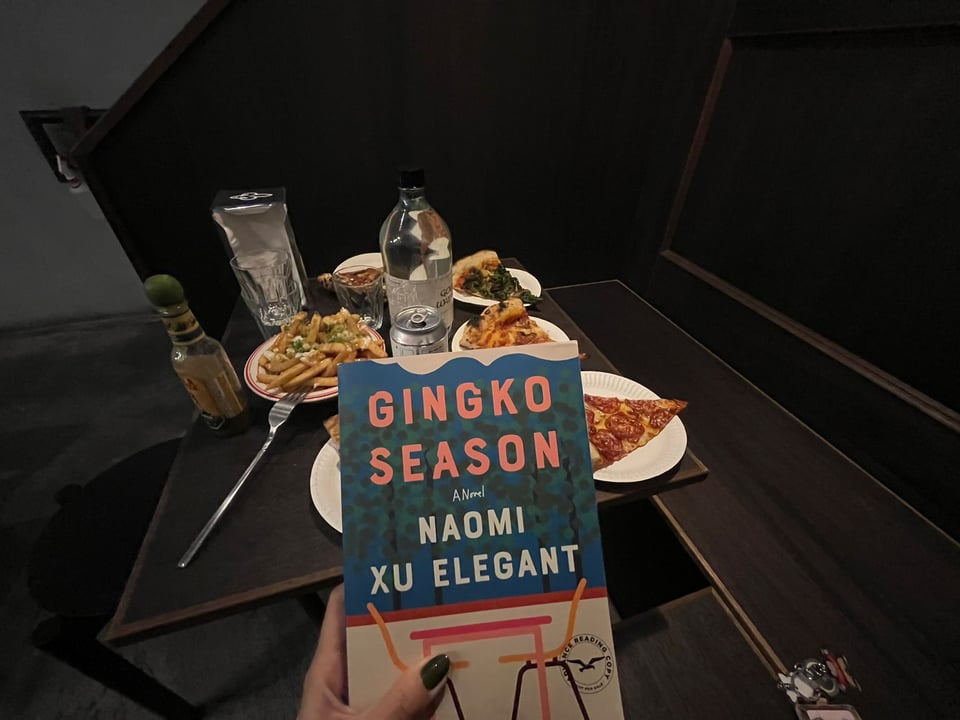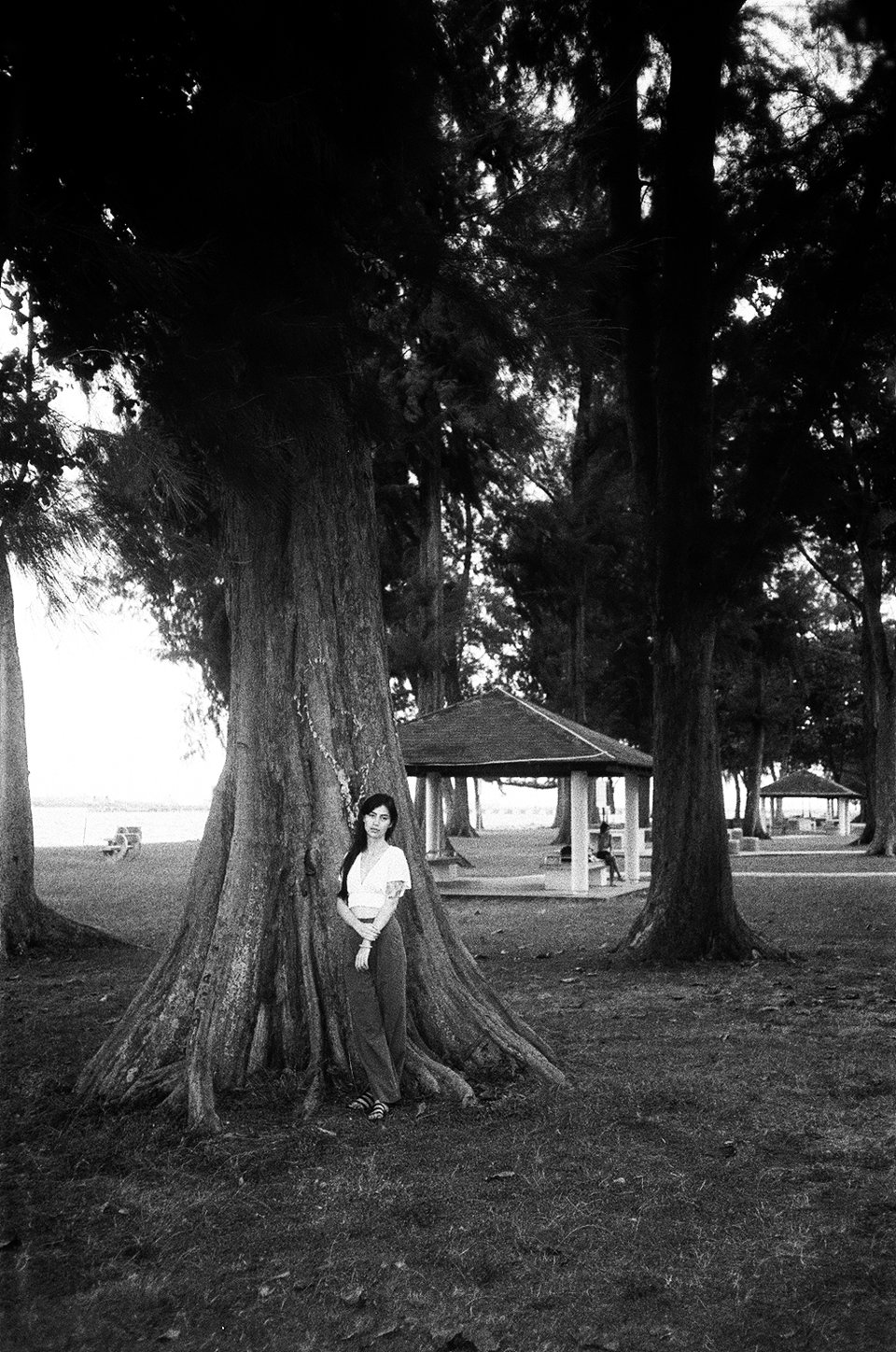Gingko Season
I cannot be sure though I think it was a combination of delays by multiple parties – publisher, agent, postal service – over the end-of-year holidays that resulted in the first and only galley proof of “Gingko Season” (May 2025) arriving at 24 Crane Road weeks after it was expected. The apartment’s inhabitants, including the intended recipient of the proof, had already decamped for frigid New York, along with their boxes of books, several framed covers of The Economist, a biscuit-looking stool from Studio Kallang upon which a cold beer was often allowed sans coaster, and a souvenir model of the jadeite cabbage from Taipei’s National Palace Museum that was impossible not to pick up once sighted. After getting back to Singapore in January, I was tasked with picking up the precious, abandoned script and, after texting that I felt like an apostle, happily made my way east.
I started reading “Gingko Season” Friday morning. I had woken up in a random and rare lazy mood, and so decided to go queue for new bank notes to use at Chinese New Year at one of the pop-up ATMs. This was a very “auntie” thing to do, I was informed, and truthfully, everyone with me in the queue at Potong Pasir was clearly old and retired, with more than one playing Youtube videos out loud on Oppo phones. But new notes are extremely pretty, per me, and widely known to be auspicious so I figured why not? Over 2.5 hours, standing and squatting in line, I finished about half the novel. On the train, waiting for my friends, before bed, I continued. By Sunday (today), I finished.
It's a first, for me, to read a book written by someone I know, and let me say: It is a thrill, especially and gratefully because the book is excellent. I will elaborate on this but first, to the topline message of this email: Pre-order Gingko Season. Now, preferably!
It’s a quirk of the publishing industry that pre-orders matter a great deal to the overall success of the book. You will want this novel, anyway, once it’s out, because everyone you think is cool will be reading it. By pre-ordering, you gain not only street cred (read it before everyone did etc) but also the satisfaction of knowing you have done your part to pave the impending and rightful success of novelist Naomi Xu Elegant.

The book’s blurb, printed on its back, describes it thusly: “For readers of Elif Batuman and Sally Rooney, a beguiling debut novel about finding oneself after heartbreak.” I cannot say this is inaccurate though I don’t think it quite captures the tactility and mental largeness of the novel. I actually don’t have the training to capture it either.
Nonetheless, to entice you: Penelope Lin works at a museum in Philadelphia and we follow her over the course of three changing seasons. First of: It is a letter to a city, like “Open City” by Teju Cole is to New York or “The Beautiful Things That Heaven Bears” by Dinaw Mengestu is to D.C. We watch Penelope cycle down Spruce and Chestnut to Rittenhouse and Chinatown with the intimacy only possible with fictional characters. We listen to her conversations and read her letters. She has a substantive inner world and takes these Proustian digressions into various things – the architectural history of the city of brotherly love; Napolean; Tang poetry; Napolean; Frank O’Hara; Napolean. It’s not at all that the book comes off academic but that it depicts an effort at life by people who are alert to what it is in its totality. People “figuring it out,” yes, but like, really, really. They are sifting strenuously through the past and scrutinizing their current environs in order to understand the task at hand, which is living.
“It was sunset, and the gloom of earlier in the day had been swept off by the wind, replaced by a patchwork of soft cloud that pulsated pinkly in the sky. My head was full of the Army of Italy and Juwan’s diffident smile and the Pantheon-esque rotunda where the exhibition would be set, and I charged alone through the cold streets. The Present, the future, the Napoleonic past and my own felt interlaced with a significant that was hard to define, though it seemed to hinge on the very fact that I could think of them all at once – that the past was made alive by my remembering it, and the present enriched by the deliberate invocation of history.” p93
The energizing nucleus of the novel is a love story – a distended break-up that unfolds alongside a luminous courtship. Start and end. There is much in here that will make the heart twinge, including a scene, in the final pages, at Clark Park in the winter (If you’ve lived in West Philly and you know this park… If you know roaming through it on a dark, cold night, with someone you like… I mean.), and these few lines about Penelope’s conception of love:
“But I knew then, too, how much I might lose, the things I’d miss. At the time they’d just seemed worthless. I’d been willing to do anything to avoid losing him, even something unnecessary, something that would have damaged me more than it helped. That was my experience of love: a warped risk calculus, a distorted perception.” p99
How exact this is about what it was like that first big time. How exact this is about versions of ourselves we have mostly shed but surely all remember.
In short, this is a really beautiful book by my friend Naomi, who, to borrow a compliment she once gifted me to great embarrassment (on both sides, imo), lives in my pantheon. I’ve said before: Many of you, who get these emails, have residences there as well, though you rarely visit.
I know it’s challenging for a few reasons to keep up a writing practice, the biggest one being the risk of not being able to faithfully express what is in one’s head. I am sympathetic to this as a committed hater of my own work – Ruairi can attest to the regularity with which he has seen me enthusiastically report out or write an article, then descend rapidly into malaise or fury when the article publishes. What previously feels so important somehow always turns, in my rendering, small or obvious. Still, I try and will always keep trying, I think, for nothing more than love of the game.
It's my view that you should, too. One: Many of you are good writers, even if you’ve forgotten. I don’t go a day without thinking, in some form, about the vows that my siblings and their partners said out loud on their wedding days. None of them would consider themselves writers but their vows, seriously, were so moving. There were elegant turns of phrase and lovely imagery and meaning behind their words. I’m convinced these texts were effective because each of their authors sat down to deeply think through what they wanted to express in that moment, then, crucially, put pen to paper (or finger to keyboard).
This process strikes me as more important now than ever before. The detritus of text and imagery that is automatically logged into our devices means so close to nothing unless we synthesize it, that is: write. Trust, you will forget what it is like to be yourself in this current moment; what you see, think and hear; trust, you may not know how you even feel about something because you have yet to express it. This doesn’t mean, of course, that all of us should attempt the triumph of a novel. But maybe you can write a little more, with feeling, to yourself. Maybe you can write, as a gift, to me.
Your willing reader,
Reb
P/S: A fun fact that genuinely makes me laugh out loud when I remember — at some point last year, when Naomi was trying to figure out what to do about her headshot for the book, I insisted she come to East Coast Park with me so that I might try to take the photo. We used a single roll of B/W film and the overwhelming majority of the shots turned out so hilarious they’re not appropriate to show. I kept asking her to come closer, come closer, so that some of the photos are just blurry planes of her face, filling the entire frame. This shot below, next to an unexpected heart carving in what I think is a Casuarina tree, is one of the rare ones I was willing to forgo my artistic delusions to take wide. Naomi wisely went for a professional photoshoot after this and the final headshot, you’ll see when you buy the book, is very nice.
